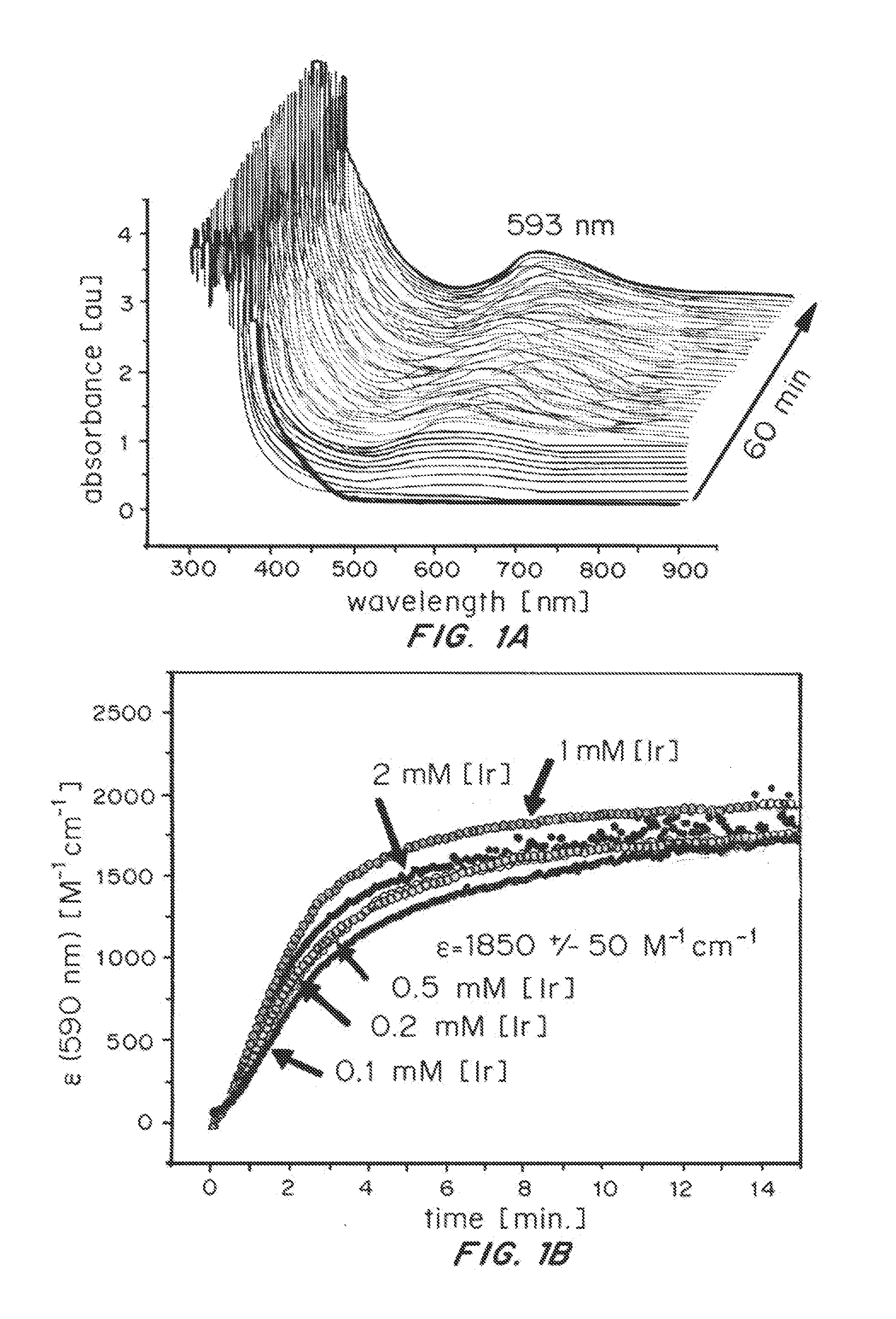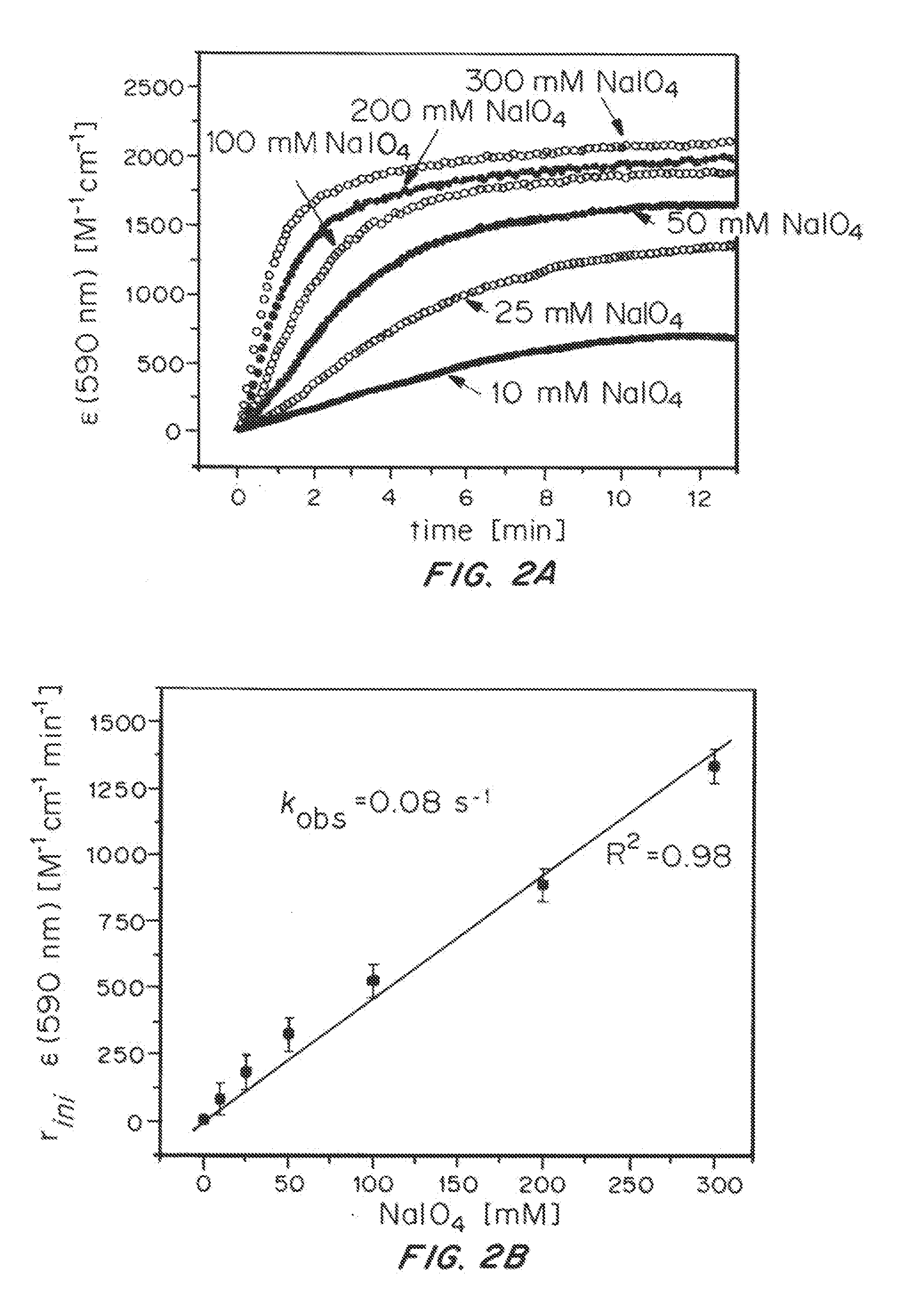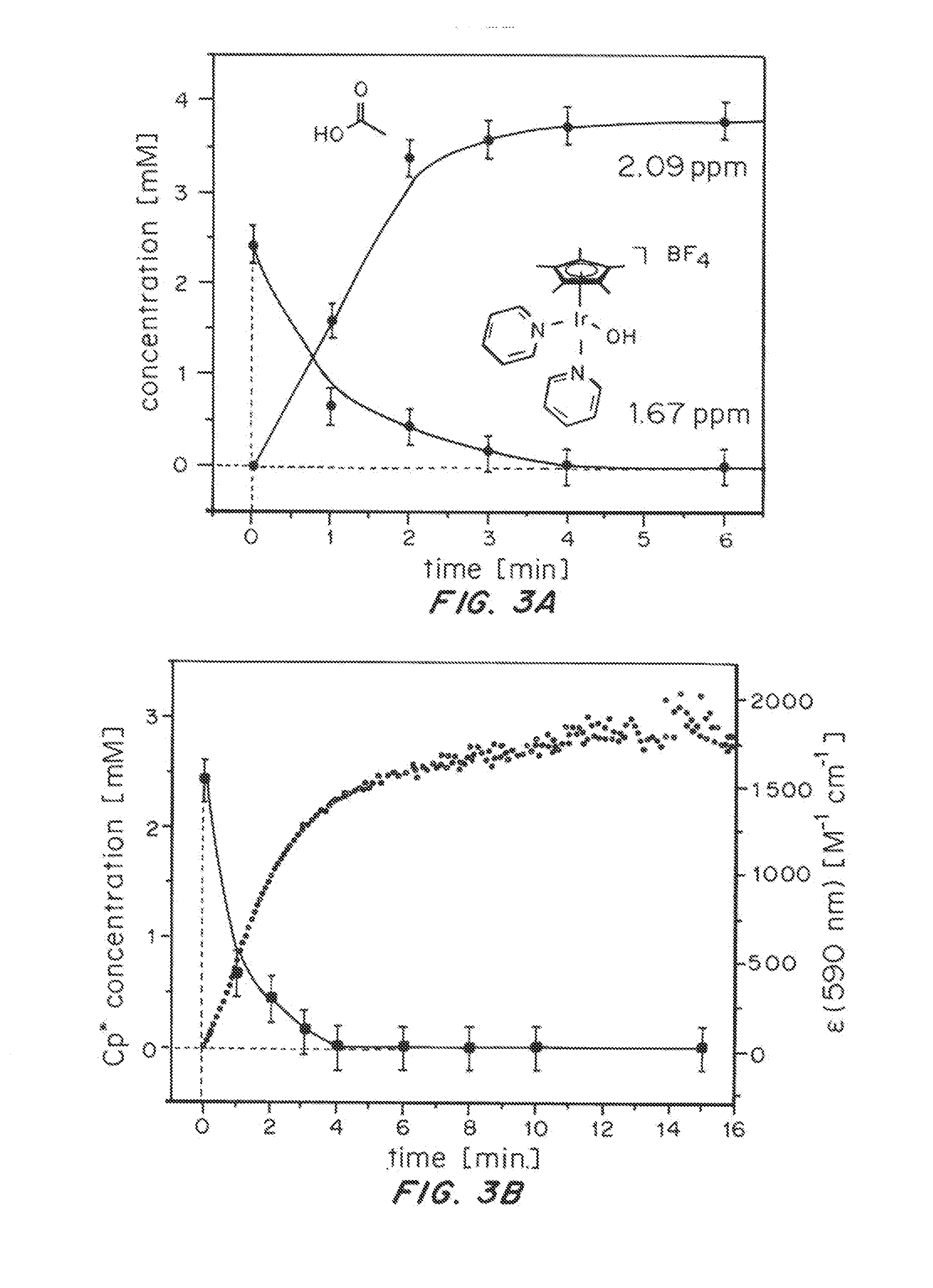Iridium complexes for electrocatalysis
a technology of electrocatalysis and complexes, applied in the field of iridium complexes, can solve the problems of high sustained current concomitan
- Summary
- Abstract
- Description
- Claims
- Application Information
AI Technical Summary
Benefits of technology
Problems solved by technology
Method used
Image
Examples
example 1
Oxidative Transformation of Pre-Catalyst [Cp*Ir(bipy)OH]BF4 (1)
[0112][Cp*Ir(bipy)OH]BF4 (1) was reacted with NaIO4 in H2O (scheme 1).
[0113]The reaction was monitored by UV-Vis spectroscopy. As shown in FIG. 1, a smooth evolution of the characteristic λmax ˜590 nm over the course of several minutes (FIG. 1A) was observed, making the reaction well suited for kinetic studies (FIG. 1B).
[0114]Variation of iridium concentration showed the rate of the reaction to be independent of [Ir] over more than one order of magnitude (FIG. 2), whereas variation of NaIO4 concentration showed a first-order rate dependence on oxidant (FIG. 2). Thus, the rate-determining step of the formation of the blue species appears to be the initial oxidation of the Cp* precursor, which proceeds with an apparent first-order rate constant kobs=0.08 s-1 corresponding to a half-life time of about 9 seconds for 1 under these conditions. Furthermore, the electronic transition at ˜590 nm likely involves a single metal cen...
example 2
Mechanism of Cp* Removal and Formation of Active Catalytic Species
[0116]In order to test how the Cp* ligand is oxidatively removed from the IrIII precursor, the coordinatively saturated sandwich complex [Cp*Ir(tacn)]SO4 (2, tacn=1,3,5-triazacyclononane) was prepared and treated with excess NaIO4 in H2O (Scheme 2).
[0117]In this case, the 1H-NMR and UV-Vis spectra of the complex remained entirely unchanged, and no O2 evolution was detectable by Clark-type electrode. The complete inertness of 2 towards oxidation demonstrates that neither direct oxidant attack on the coordinated Cp* ligand or outer-sphere electron transfer from the IrIII to the oxidant appears to occur, and oxidative transformation of Cp*IrIII complexes thus occurs within the coordination sphere of the metal, requiring at least one open site to proceed.
[0118]While [Cp*Ir(bipy)X]+ complexes with various hydrolysable X ligands in the open site readily react with aqueous periodate, no reaction occurred between [Cp*Ir(bipy)...
example 3
Oxygen Yield of IrIV Homogeneous Catalyst
[0136]Oxygen was detected with a Clark electrode using a custom made zero-headspace 10 mL glass cell, water jacketed for constant temperature. A Teflon cap through which the Clark electrode membrane contacted deionized water (adjusted to pH 2.5 using nitric acid) also held a catalyst-coated nanoITO film on FTO-coated glass sample that was submerged in the cell. Catalyst-loaded samples were prepared similarly to those used for electrochemistry, except with a 1.6 cm2 geometric surface area. The Clark electrode was allowed to stabilize while stirring the deionized water solution for one hour prior to injection with an oxidizing solution of freshly prepared NaIO4 in deionized water. Catalyst response and O2 generation occurred immediately, without any lag phase.
[0137]A typical experiment, used 25 μL of 0.25 M NaIO4 in deionized water. The oxygen content in the cell was monitored until oxygen evolution ceased, which for a loading of around 50 nmol...
PUM
| Property | Measurement | Unit |
|---|---|---|
| pH | aaaaa | aaaaa |
| Faradaic efficiency | aaaaa | aaaaa |
| Faradaic efficiency | aaaaa | aaaaa |
Abstract
Description
Claims
Application Information
 Login to View More
Login to View More - R&D
- Intellectual Property
- Life Sciences
- Materials
- Tech Scout
- Unparalleled Data Quality
- Higher Quality Content
- 60% Fewer Hallucinations
Browse by: Latest US Patents, China's latest patents, Technical Efficacy Thesaurus, Application Domain, Technology Topic, Popular Technical Reports.
© 2025 PatSnap. All rights reserved.Legal|Privacy policy|Modern Slavery Act Transparency Statement|Sitemap|About US| Contact US: help@patsnap.com



